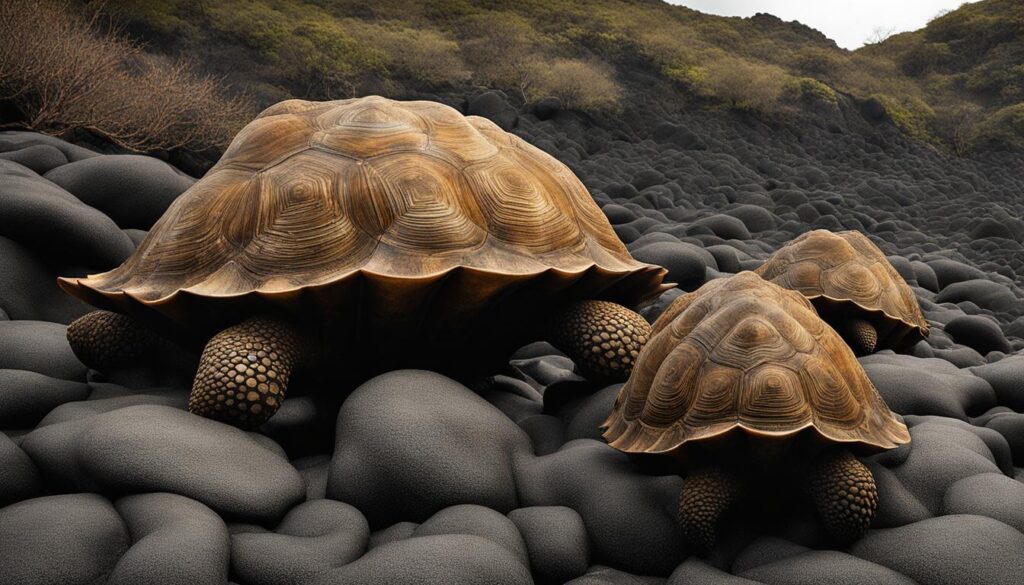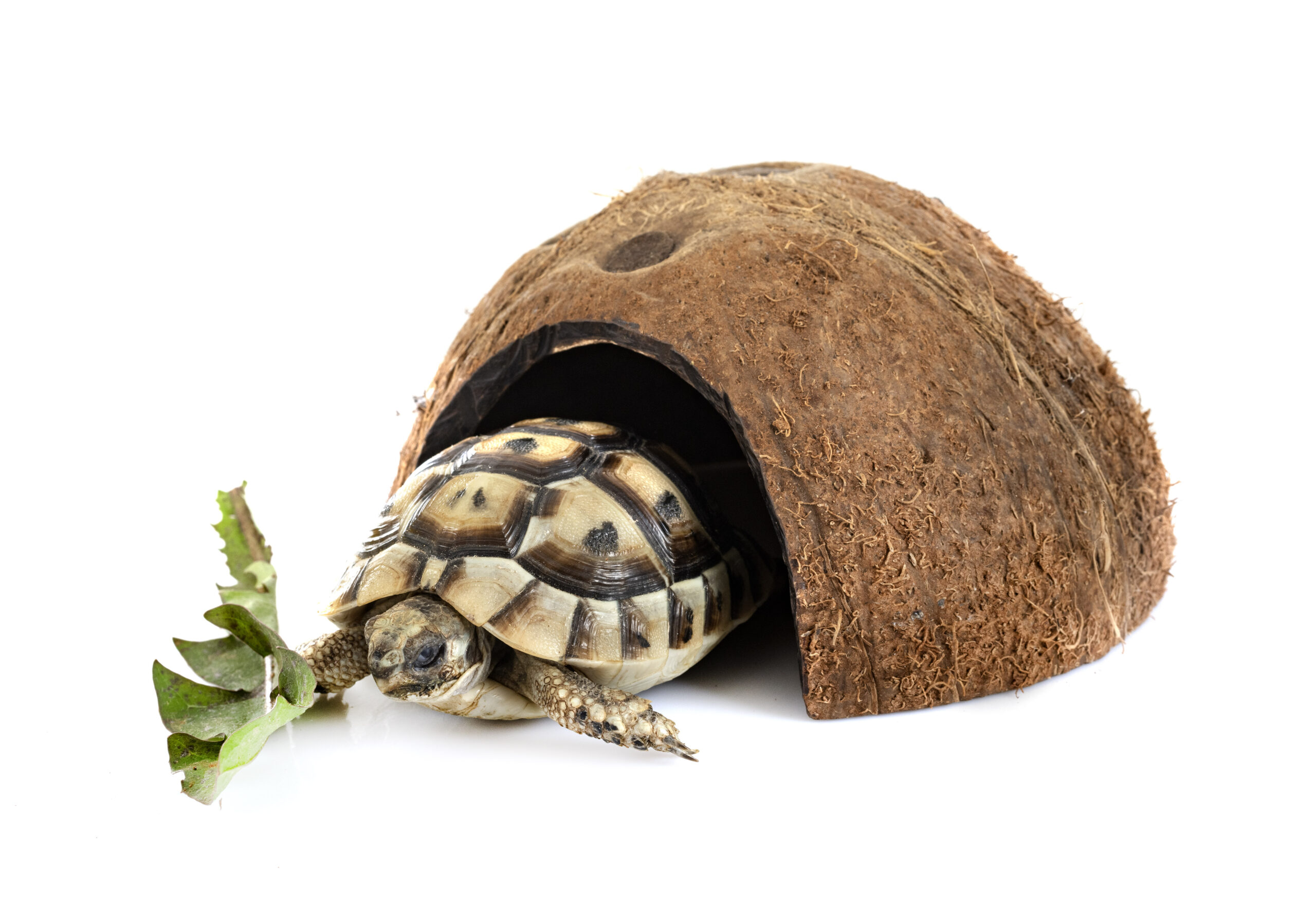Welcome to our article where we dive into the world of giant turtles and tortoises, unveiling the biggest and most impressive species that have ever graced our planet. From the largest sea turtles to giant tortoises, from ancient turtle species to enormous land turtles, we’ll explore record-breaking turtle sizes and the wonders of these magnificent creatures. Join us on this journey as we discover the world’s largest turtles and tortoises and explore what truly defines a giant in the turtle kingdom.
Key Takeaways:
- The world is home to some incredible giant turtles and tortoises, showcasing astonishing sizes.
- The largest sea turtles are among the most majestic creatures in the ocean.
- Giant tortoises, both extinct and still-existing, have left their mark on ecosystems.
- Ancient turtle species provide fascinating insights into evolutionary history.
- Enormous land turtles continue to awe us with their massive size.
Uncovering the History: Extinct Giants of Madagascar
In this section, we will explore the extinct giants of Madagascar, focusing on the rediscovery of Astrochelys rogerbouri, a previously misidentified species of giant tortoise. Madagascar, the fourth-largest island in the world, is known for its diverse and unique wildlife. It once boasted a tortoise-rich past, with several species of giant tortoises roaming its lands.
Rediscovery of Astrochelys rogerbouri
Astrochelys rogerbouri, also known as Roger Bour’s tortoise, was thought to be extinct until its rediscovery in 1994. This remarkable find shed light on a species that was thought to be lost forever. Its existence challenges our understanding of the biodiversity of Madagascar and serves as a testament to the resilience of these ancient creatures.
Madagascar’s Tortoise-rich Past
In Madagascar’s tortoise-rich past, several species of giant tortoises thrived in this unique ecosystem. These magnificent creatures played an integral role in the diverse web of life on the island. From the Aldabra giant tortoise to the extinct species like Astrochelys grandidieri and Megalochelys atlas, these tortoises shaped the landscape and influenced the distribution of vegetation.
Extinction and Impact on Ecosystem
Unfortunately, the era of giant tortoises in Madagascar came to an end due to various factors, including habitat loss, hunting, and introduced species. The extinction of these remarkable creatures had a profound impact on the island’s ecosystem. As the tortoises vanished, so did their role in seed dispersal and vegetation management. This disruption continues to affect the ecological balance of Madagascar’s forests and grasslands even today.

The Aldabra’s Role in Ecosystem Restoration
While the Galapagos giants receive a lot of attention, the Aldabra giant tortoise plays a crucial role in ecosystem restoration on its native island. Native to the Aldabra Atoll in the Seychelles, these tortoises play a vital role in shaping the environment around them.
Aldabra giant tortoises are excellent seed dispersers, consuming various fruits and vegetation and then excreting the seeds in different parts of the island. This activity helps to improve plant diversity and promote the growth of new vegetation. In addition, their grazing habits help to control dominant plant species, allowing a more diverse range of plants to thrive.
Thanks to conservation efforts, the Aldabra giant tortoise population has seen a significant recovery in recent years. These fascinating creatures continue to play a vital role in maintaining the balance and health of their unique island ecosystem.
Comparison of Galapagos and Aldabra Giant Tortoises
| Tortoise Species | Size | Weight | Lifespan | Habitat | Conservation Status |
|---|---|---|---|---|---|
| Galapagos Giant Tortoise | Up to 5 feet (1.5 meters) | Over 900 pounds (408 kilograms) | Over 100 years | Galapagos Islands | Endangered |
| Aldabra Giant Tortoise | Up to 4 feet (1.2 meters) | Up to 550 pounds (250 kilograms) | Over 100 years | Aldabra Atoll, Seychelles | Vulnerable |
As the table above shows, both the Galapagos and Aldabra giant tortoises are impressive in their own right. While the Galapagos giants are larger, both species have impressive lifespans and are critically important to their respective ecosystems.
Biggest Turtles and Tortoises in the World
When it comes to size, some turtles and tortoises truly stand out as the giants of their kind. In this section, we will explore two remarkable species that hold the title for being some of the biggest in the world. From the ocean’s largest turtle to enormous fossil goliaths, these creatures have captivated researchers and nature enthusiasts alike. Let’s dive in and discover these impressive giants.
The Leatherback: The Ocean’s Largest
One of the most awe-inspiring turtles in the world is the leatherback turtle (Dermochelys coriacea). Known as the ocean’s largest turtle species, it can reach astonishing sizes. These magnificent creatures can grow up to 7 feet (2 meters) in length and can weigh up to 2,000 pounds (900 kilograms).
What sets the leatherback turtle apart is its unique physical characteristics. Unlike other turtles, it lacks a bony shell and instead has a flexible, leathery carapace. This adaptation allows it to dive to incredible depths as it explores the open ocean in search of its favorite food: jellyfish. With its powerful flippers and streamlined body, the leatherback turtle is a true marvel of evolution.
Fossil Goliaths: Leviathanochelys aenigmatica’s Discovery
While the leatherback turtle is the largest living turtle, it is not the only historical giant to have roamed our planet. Fossil records have revealed the existence of incredible marine turtle species from the past, one of the most impressive being Leviathanochelys aenigmatica.
This enormous turtle, found in Europe, lived approximately 70 million years ago during the Late Cretaceous period. With a carapace measuring around 10 feet (3 meters) in length, Leviathanochelys aenigmatica was a true fossil goliath. Its discovery sheds light on the diversity and size of marine turtles that once inhabited our oceans, providing valuable insights into the ancient ecosystems they thrived in.
As we explore the world of giant turtles and tortoises, it becomes clear that these incredible creatures both past and present deserve our admiration and protection. Their size and unique adaptations showcase the wonders of nature, reminding us of the fantastic diversity of life on our planet.
Introducing Leviathanochelys aenigmatica: Europe’s Marine Colossus
In this section, we will introduce the fascinating Leviathanochelys aenigmatica, Europe’s marine colossus. This remarkable turtle species, discovered in Europe, holds significant importance in our understanding of the evolutionary history of marine turtles in the region.
Leviathanochelys aenigmatica, commonly referred to as the Europe’s marine colossus, is an ancient species that once inhabited the waters of Europe millions of years ago. Its discovery has provided invaluable insight into the evolution and diversification of marine turtles in this part of the world.
What makes Leviathanochelys aenigmatica truly fascinating is its unique characteristics. With its massive size and robust build, it is believed to have been one of the largest marine turtles of its time. Its shell, measuring over six feet in length, showcases the impressive adaptation of these creatures to the marine environment.
The presence of Leviathanochelys aenigmatica in Europe offers clues about the ancient marine ecosystems that existed in this region. By studying its fossils, scientists have been able to piece together a better understanding of the rich biodiversity that once flourished in European waters.
By unraveling the mysteries surrounding Leviathanochelys aenigmatica, researchers have gained invaluable insights into the past, helping us comprehend the complex history of Europe’s marine ecosystems and the role that giant turtles played in shaping them.
Furthermore, the discovery of Leviathanochelys aenigmatica highlights the importance of continued exploration and preservation of Europe’s marine heritage. It serves as a reminder of the remarkable diversity that once existed in these waters and the need to protect and conserve the fragile ecosystems that remain today.
The Significance of Leviathanochelys aenigmatica:
The discovery of Leviathanochelys aenigmatica has provided significant contributions to our understanding of Europe’s paleontological and evolutionary history. The study of this ancient marine colossus has shed light on the ecological conditions, biodiversity patterns, and evolutionary processes that shaped Europe’s marine ecosystems millions of years ago.
| Key Points | Implications |
|---|---|
| Large size and robust build | Understanding the adaptation of marine turtles to different environmental conditions |
| Discovery in Europe | Insights into the ancient marine ecosystems and biodiversity of Europe |
| Contribution to evolutionary studies | Advancing our knowledge of the evolutionary history of marine turtles in Europe |
| Preservation and conservation | Highlighting the importance of protecting and conserving Europe’s marine heritage |
By comprehending the significance of Leviathanochelys aenigmatica, we gain a deeper appreciation for the marvels of the natural world and the intricate interconnectedness of past and present ecosystems.
Comparing Sizes: From Ancient Marine Behemoths to Current-Day Turtles
In this section, we will compare the sizes of ancient marine behemoths to current-day turtles, providing fascinating insights into the enormous creatures that once roamed the oceans and the turtles we know today. We will focus on two remarkable species, Protostega and Archelon, known as North America’s underwater titans.
Protostega and Archelon: North America’s Underwater Titans
Protostega and Archelon were ancient marine reptiles that inhabited the seas during the Late Cretaceous period. These colossal creatures were part of a group called sea turtles, but they were much larger than the turtles we are familiar with today. Protostega, for instance, could reach lengths of up to 10 feet and weighed over a ton, making it one of the largest known turtles in history. Archelon, on the other hand, was even more massive, with an estimated length of 15 feet and a weight of up to 4,500 pounds, making it one of the largest turtles ever to exist.
These ancient marine behemoths had streamlined bodies, powerful flippers, and a shell structure designed for life in the oceans. They were believed to have inhabited the warm coastal waters of North America, where they navigated the oceans in search of food and breeded. Fossil evidence of their existence has been found in various locations, including the central United States and Canada.
Despite their impressive size, both Protostega and Archelon became extinct along with many other ancient marine reptiles at the end of the Cretaceous period. While their exact demise remains a subject of debate among scientists, it is widely believed that changes in the Earth’s climate and the extinction event that wiped out the dinosaurs played a significant role in their extinction.
Understanding Turtle Evolutive Trends
Comparing the ancient marine behemoths to current-day turtles helps us understand the evolutive trends that have shaped the turtle species we have today. While the giant size of Protostega and Archelon is awe-inspiring, it is interesting to note that most modern turtles are relatively smaller in comparison. This suggests that over time, turtle species have undergone evolutive changes, adapting to different ecological and environmental conditions.
Today, we are fortunate to coexist with a diverse range of turtle species, both on land and in the oceans. From the massive leatherback turtles, known as the ocean’s largest, to smaller freshwater turtles like the red-eared slider, these creatures continue to captivate our imagination and play crucial roles in their respective ecosystems.
The Size Dynamic of Sea Turtles: An Analysis
In this section, we will analyze the size dynamic of sea turtles, examining how their body sizes have evolved over time. Sea turtles are fascinating creatures that have inhabited the Earth’s oceans for millions of years. Their size plays a crucial role in their survival and ecological impact.
Assessing Body Size with Fossil Records
One way to understand the size dynamics of sea turtles is through the examination of fossil records. Fossils provide valuable insight into the past, allowing scientists to determine the size ranges of extinct turtle species. By studying these fossils, researchers can compare the body sizes of ancient sea turtles to their modern-day counterparts.
Fossilized turtle shells and bone fragments give us a glimpse into the diverse range of sizes that sea turtles have exhibited throughout their evolutionary history. By analyzing the size variations preserved in the fossil record, scientists can identify trends and patterns in the growth and development of sea turtles.
What Defines a Giant in the Turtle Kingdom?
Defining what constitutes a giant in the turtle kingdom involves assessing both current and fossil records. While size alone doesn’t determine a turtle’s status as a giant, it is an essential factor. Generally, sea turtles with exceptionally large body sizes that exceed the average range for their species can be considered giants.
To determine if a sea turtle is truly a giant, scientists consider factors such as length, weight, and overall size compared to other individuals of the same species. By comparing the measurements of various individuals and analyzing the distribution of body sizes within a species, researchers are able to establish criteria for defining a giant turtle.
In conclusion, the size dynamic of sea turtles is a fascinating subject of study. By examining fossil records and defining the criteria for giants in the turtle kingdom, researchers gain valuable insights into the evolution and diversity of these majestic creatures.
Conclusion
In conclusion, our exploration of the biggest turtles and tortoises in the world has revealed a fascinating array of ancient giants and remarkable survivors. From extinct species like Astrochelys rogerbouri in Madagascar to still-existing behemoths like the Galapagos tortoises and the Aldabra giant tortoise, these magnificent creatures have left a lasting impact on ecosystems and captivated our imaginations.
The Indian Ocean has proven to be a tortoise evolutionary hub, with unique species dispersed across its islands and contributing to the ecological diversity of the region. Additionally, we have examined the discovery of fossil goliaths such as Leviathanochelys aenigmatica, shedding light on the evolutionary history of marine turtles in Europe.
By comparing ancient marine titans like Protostega and Archelon to today’s sea turtles, we have gained insights into the evolution of these remarkable reptiles. The analysis of body size dynamics and the criteria for defining a giant in the turtle kingdom have further deepened our understanding.
Overall, the study of the world’s biggest turtles and tortoises highlights the importance of their conservation. Through continued research, education, and protection efforts, we can ensure the preservation of these incredible creatures for future generations to marvel at and appreciate.
FAQ
What are the biggest turtles and tortoises in the world?
The biggest turtles and tortoises in the world include the leatherback turtle, the Galapagos giant tortoise, the Aldabra giant tortoise, and extinct species like Astrochelys rogerbouri and Leviathanochelys aenigmatica.
What is the largest sea turtle species?
The leatherback turtle is the largest sea turtle species, known for its massive size and unique leathery shell.
Can you tell me about Astrochelys rogerbouri?
Astrochelys rogerbouri is an extinct species of giant tortoise that was rediscovered after being misidentified for many years. It was one of the largest tortoises to have existed.
What impact did the extinction of giant tortoises in Madagascar have on the island’s ecosystem?
The extinction of giant tortoises in Madagascar had a significant impact on the island’s ecosystem. These tortoises played a crucial role in seed dispersal and vegetation maintenance, and their loss has had cascading effects on the ecosystem.
How did tortoises evolve in the Indian Ocean?
The Indian Ocean served as a tortoise evolutionary hub, with different species dispersed across the islands. The unique environmental conditions and isolation of these islands allowed for the evolution of various tortoise species.
What is the role of Galapagos giants in ecosystem restoration?
The Galapagos giant tortoises have an important role in ecosystem restoration. They are considered “ecosystem engineers” as their grazing and seed dispersal activities shape the vegetation and biodiversity of the islands.
Which turtle species is known as Leviathanochelys aenigmatica?
Leviathanochelys aenigmatica is an enormous marine turtle species found in Europe. Its discovery has provided valuable insights into the evolutionary history of marine turtles in Europe.
What were Protostega and Archelon?
Protostega and Archelon were ancient marine turtle species that lived in North America. They were enormous in size and are considered record-breaking turtle species.
How has the size of sea turtles evolved over time?
The size of sea turtles has varied over time. Ancient species like Protostega and Archelon were much larger than modern-day sea turtles. The evolution of sea turtle size is influenced by various environmental factors.
How do scientists assess the body size of ancient turtles with fossil records?
Scientists assess the body size of ancient turtles by analyzing fossil records. This involves measuring various skeletal elements and using comparative methods to estimate the overall size of the turtle.
What defines a giant in the turtle kingdom?
A giant in the turtle kingdom is typically defined by its exceptional size compared to other species within its group. Factors such as body weight, shell size, and overall dimensions contribute to determining the status of a turtle as a giant.







